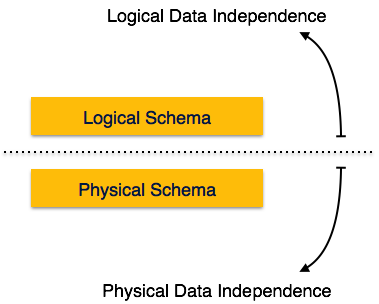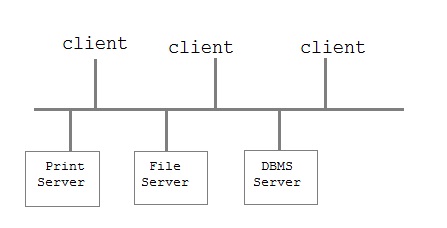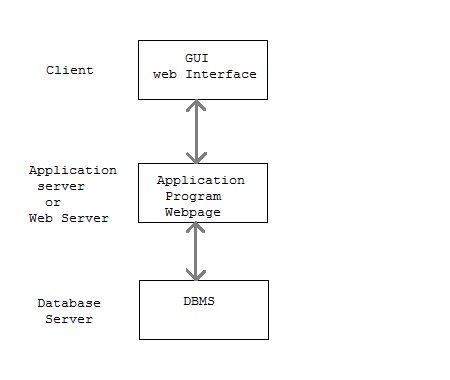Theoretical Paper
- Computer Organization
- Data Structure
- Digital Electronics
- Object Oriented Programming
- Discrete Mathematics
- Graph Theory
- Operating Systems
- Software Engineering
- Computer Graphics
- Database Management System
- Operation Research
- Computer Networking
- Image Processing
- Internet Technologies
- Micro Processor
- E-Commerce & ERP
Practical Paper
Industrial Training
Physical / Codd Rules
If a database system is not multi-layered, then it becomes difficult to make any changes in the database system. Database systems are designed in multi-layers as we learnt earlier.
Data Independence
A database system normally contains a lot of data in addition to users’ data. For example, it stores data about data, known as metadata, to locate and retrieve data easily. It is rather difficult to modify or update a set of metadata once it is stored in the database. But as a DBMS expands, it needs to change over time to satisfy the requirements of the users. If the entire data is dependent, it would become a tedious and highly complex job.

Metadata itself follows a layered architecture, so that when we change data at one layer, it does not affect the data at another level. This data is independent but mapped to each other.
Logical Data Independence
Logical data is data about database, that is, it stores information about how data is managed inside. For example, a table (relation) stored in the database and all its constraints, applied on that relation.
Logical data independence is a kind of mechanism, which liberalizes itself from actual data stored on the disk. If we do some changes on table format, it should not change the data residing on the disk.
Physical Data Independence
All the schemas are logical, and the actual data is stored in bit format on the disk. Physical data independence is the power to change the physical data without impacting the schema or logical data.
For example, in case we want to change or upgrade the storage system itself − suppose we want to replace hard-disks with SSD − it should not have any impact on the logical data or schemas.
Two-tier Client / Server Architecture

Two-tier Client / Server architecture is used for User Interface program and Application Programs that runs on client side. An interface called ODBC(Open Database Connectivity) provides an API that allow client side program to call the dbms. Most DBMS vendors provide ODBC drivers. A client program may connect to several DBMS's. In this architecture some variation of client is also possible for example in some DBMS's more functionality is transferred to the client including data dictionary, optimization etc. Such clients are called Data server.
Three-tier Client / Server Architecture

Three-tier Client / Server database architecture is commonly used architecture for web applications. Intermediate layer called Application server or Web Server stores the web connectivty software and the business logic(constraints) part of application used to access the right amount of data from the database server. This layer acts like medium for sending partially processed data between the database server and the client.
Codd's Rule
E.F Codd was a Computer Scientist who invented Relational model for Database management. Based on relational model, Relation database was created. Codd proposed 13 rules popularly known as Codd's 12 rules to test DBMS's concept against his relational model. Codd's rule actualy define what quality a DBMS requires in order to become a Relational Database Management System(RDBMS). Till now, there is hardly any commercial product that follows all the 13 Codd's rules. Even Oracle follows only eight and half out(8.5) of 13. The Codd's 12 rules are as follows.
Rule zero
This rule states that for a system to qualify as an RDBMS, it must be able to manage database entirely through the relational capabilities.
Rule 1 : Information rule
All information(including metadeta) is to be represented as stored data in cells of tables. The rows and columns have to be strictly unordered.
Rule 2 : Guaranted Access
Each unique piece of data(atomic value) should be accesible by : Table Name + primary key(Row) + Attribute(column).
NOTE : Ability to directly access via POINTER is a violation of this rule.
Rule 3 : Systemetic treatment of NULL
Null has several meanings, it can mean missing data, not applicable or no value. It should be handled consistently. Primary key must not be null. Expression on NULL must give null.
Rule 4 : Active Online Catalog
Database dictionary(catalog) must have description of Database. Catalog to be governed by same rule as rest of the database. The same query language to be used on catalog as on application database.
Rule 5 : Powerful language
One well defined language must be there to provide all manners of access to data. Example: SQL. If a file supporting table can be accessed by any manner except SQL interface, then its a violation to this rule.
Rule 6 : View Updation rule
All view that are theoretically updatable should be updatable by the system.
Rule 7 : Relational Level Operation
There must be Insert, Delete, Update operations at each level of relations. Set operation like Union, Intersection and minus should also be supported.
Rule 8 : Physical Data Independence
The physical storage of data should not matter to the system. If say, some file supporting table were renamed or moved from one disk to another, it should not effect the application.
Rule 9 : Logical Data Independence
If there is change in the logical structure(table structures) of the database the user view of data should not change. Say, if a table is split into two tables, a new view should give result as the join of the two tables. This rule is most difficult to satisfy.
Rule 10 : Integrity Independence
The database should be able to conforce its own integrity rather than using other programs. Key and Check constraints, trigger etc should be stored in Data Dictionary. This also make RDBMS independent of front-end.
Rule 11 : Distribution Independence
A database should work properly regardless of its distribution across a network. This lays foundation of distributed database.
Rule 12 : Nonsubversion rule
If low level access is allowed to a system it should not be able to subvert or bypass integrity rule to change data. This can be achieved by some sort of looking or encryption.

